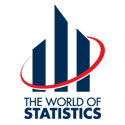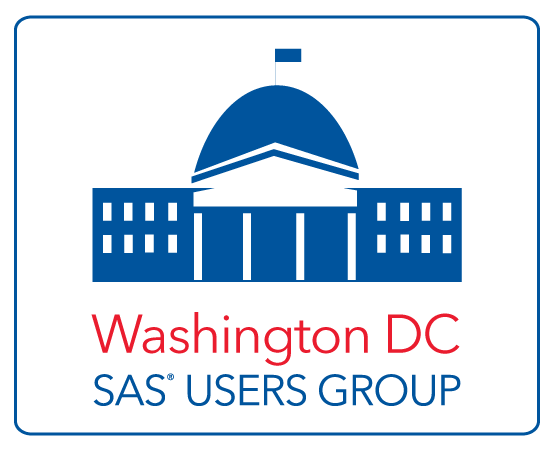November 2009
Contents:
- Nominations Sought for the 2011 Waksberg Award
- Nominations Sought for 2010 Julius Shiskin Award
- Seminars, Conferences, Symposia & Call For Papers:
- Federal Committee on Statistical Methodology 2009 Research Conference (November 2-4, 2009)
- Survey Research Methods Section Webinar:
Dual Frame Theory Applied to Landline and Cell Phone Surveys (November 10, 2009)
The Psychology of Survey Response (February 9, 2010)
- Workshop on Microdata Access (November 18, 2009)
- Info-Metrics Institute Workshop (November 20, 2009)
- 2010 International Conference on Social Computing, Behavioral Modeling, & Prediction (SBP10- March 29 to April 1, 2010)
- Upcoming Seminars
- Education Announcements:
- Short Courses (includes JPSM short courses)
- SIGSTAT Topics
- Note From The WSS NEWS Editor
- WSS People
- PDF Version:
Newsletter
Area Meetings and Courses
Nominations Sought for the 2011 Waksberg Award
The Journal of Survey Methodology has established an annual invited paper series in honor of Joe Waksberg to recognize his contributions to survey methodology. Each year a prominent survey statistician is chosen to write a paper that reviews the development and current state of an important topic in the field of survey methodology. The paper reflects the mixture of theory and practice that characterized Joe Waksberg's work.
The recipientof the Waksberg Award will receive an honorarium and give the 2011 Waksberg Invited Address at the Statistics Canada Symposium to be held in the autumn of 2011. The paper will be published in a future issue of Survey Methodology.
The author of the 2011 Waksberg paper will be selected by a four-person committee appointed by Survey Methodology and the American Statistical Association. Nomination of individuals to be considered as authors or suggestions for topics should be sent before February 28, 2010 to the chair of the committee, Dan Kasprzyk (DKasprzyk@Mathematica-MPR.com).
Previous Waksberg Award honorees and their invited papers are:
2001 Gad Nathan, "Telesurvey Methodologies for Household Surveys-A Review and Some Thoughts for the Future." Survey Methodology, vol. 27, no. 1, pp.7-31.
2002 Wayne Fuller, "Regression Estimation for Survey Samples." Survey Methodology, vol. 28, no. 1, pp. 5-23.
2003 David Holt, "Methodological Issues in the Development and Use of Statistical Indicators for International Comparisons." Survey Methodology, vol. 29, no. 1, pp. 5-17.
2004 Norman Bradburn, "Understanding the Question-Answer Process." Survey Methodology, vol. 30, no. 1, pp. 5-15.
2005 J.N.K Rao, "Interplay Between Sample Survey Theory and Practice: An Appraisal." Survey Methodology, vol. 31, no. 2, pp. 117-138.
2006 Alastair Scott, "Population-Based Case Control Studies." Survey Methodology, vol. 32, no. 2, pp. 123-132.
2007 Carl-Erik S rndal, "The Calibration Approach in Survey Theory and Practice." Survey Methodology, vol. 33, no. 2, pp. 99-119.
2008 Mary Thompson, "International surveys: Motives and Methodologies." Survey Methodology, vol. 34, no. 2, pp. 131-141.
2009 Graham Kalton, "Methods for Oversampling Rare Subpopulations in Social Surveys." Survey Methodology (forthcoming)
Return to top
Federal Committee on Statistical Methodology
2009 Research Conference
November 2-4, 2009
The 2009 Federal Committee on Statistical Methodology (FCSM) Research Conference will be held November 2-4, 2009 at the Washington Conventions Center, 801 Mount Vernon Place NW, Washington, DC. The Conference provides a forum for experts from around the world to discuss and exchange current research and methodological topics relevant to Federal government statistical programs. Each day of the conference will offer papers on a wide range of topics including the use of advanced technologies for survey design and data collection, processing and dissemination, data mining, data warehousing and metadata, treatment of missing data, improving coverage and response rates, confidentiality and disclosure issues, record linkage, sample design and estimation, cognitive research and usability testing, and data quality.
Technical demonstrations will run concurrently on the second day of the conference during the first morning session. Applications will include demonstrations on Q-Notes, Demonstration of Field Interviewer (Fl) Tracker Tool, Statipedia, and a Demonstration of Census Coverage Measurement Clerical Matching Software. Sessions feature papers and demonstrations by government, private sector, and academic researchers from eight countries. Katharine Abraham from the Joint Program in Survey Methodology at the University of Maryland will be our guest speaker in the opening plenary session. All paper sessions will include an open discussion and some sessions will include a formal discussion.
Conference Fee: Registration is $195. For a copy of the advance program and registration information please refer to http://www.fcsm.gov/events/
Return to top
Section on Survey Research Methods Webinar
Dual Frame Theory Applied to Landline and Cell Phone Surveys
November 10, 2009
Dear Washington Statistical Society Member:
The Section on Survey Research Methods is proud to announce its new webinar program. The first webinar in the series is "Dual Frame Theory Applied to Landline and Cell Phone Surveys" to be presented by J. Michael Brick on Tuesday, November 10, from 1:00 p.m. to 3:00 p.m. Eastern time.
Webinar Description: As the number of households that have only cell phones has increased dramatically over the past 5 years, telephone surveys have addressed this problem by sampling from both landline and cell phone numbers. One of the issues emerging from these dual frame surveys is that the theoretical foundation for these surveys largely ignores nonsampling errors. Because these errors may be large and result in biases, they must be considered in dual frame telephone surveys. This Webinar begins with a review of dual frame theory with particular attention to surveys that sample landline and cell phone numbers. It then examines the effect of nonsampling errors when surveys are conducted without considering these errors. In particular, we describe the potential effect of nonresponse and measurement error using data from surveys of landlines and cell phone numbers. We discuss both practical sample design issues such as whether to screen for cell-only households, and weighting methods to reduce the effects of the errors. The advantages and disadvantages of different sample designs and estimation methods are discussed. The examples are from actual dual frame telephone surveys.
For more information on the webinar program and to register, please visit the SRMS web site at: http://www.amstat.org/sections/SRMS/webinar.html
If you have any questions, please feel free to contact Rick Peterson at the ASA office using the below information.
Rick Peterson
Education Programs Associate
American Statistical Association
732 North Washington Street
Alexandria, VA 22153
(703) 684-1221 ext. 1864
FAX: (703) 684-3768
rick@amstat.org
www.amstat.org
Nominations Sought for 2010 Julius Shiskin Award
Nominations are invited for the annual Julius Shiskin Memorial Award for Economic Statistics. The Award is given in recognition of unusually original and important contributions in the development of economic statistics or in the use of statistics in interpreting the economy. Contributions are recognized for statistical research, development of statistical tools, application of information technology techniques, use of economic statistical programs, management of statistical programs, or developing public understanding of measurement issues. The Award was established in 1980 by the Washington Statistical Society (WSS) and is now cosponsored by the WSS, the National Association for Business Economics, and the Business and Economics Statistics Section of the American Statistical Association (ASA).
The award will be presented with an honorarium of $750 plus additional recognition from the sponsors. A nomination form and a list of all previous recipients are available on the ASA Website at www.amstat.org/sections/bus_econ/shiskin.html. Completed nominations must be received by March 5, 2010. For questions or more information, please contact Steven Paben, Julius Shiskin Award Committee Secretary, via e-mail at paben.steven@bls.gov or call 202-691-6147.
Return to topSIGSTAT Topics for Fall/Winter 2009-2010
November 18, 2009: SAS for Forecasting Time Series: Part 1
(http://support.sas.com/publishing/bbu/companion_site/57275.html)
This month begins a series of meetings on the topic using SAS to forecast time series. We follow the book titled "SAS for Forecasting Time Series 2nd Edition" by Brocklebank and Dickey.
Part 1: This month covers Chapter 1: Overview of Time Series and Chapter 2: Simple Models: Autoregression . Topics include regression with autocorrelated error terms, transformations to stabilize the variance, forecasting with PROC ARIMA, the backshift operator B, and the Yule-Walker equations.
December 16, 2009: SAS for Forecasting Time Series: Part 2
(http://support.sas.com/publishing/bbu/companion_site/57275.html)
This month continues a series of meetings on the topic using SAS to forecast time series. We follow the book titled "SAS for Forecasting Time Series 2nd Edition" by Brocklebank and Dickey.
Part 2: This month begins Chapter 3: The General ARIMA Model. Topics include prediction and model identification.
January 20, 2010: SAS for Forecasting Time Series: Part 3
(http://support.sas.com/publishing/bbu/companion_site/57275.html)
This month continues a series of meetings on the topic using SAS to forecast time series. We follow the book titled "SAS for Forecasting Time Series 2nd Edition" by Brocklebank and Dickey.
Part 3:This month continues Chapter 3: The General ARIMA Model. Topics include using the IDENTIFY and ESTIMATE statements with a number of examples.
February 24, 2010: SAS for Forecasting Time Series: Part 4
(http://support.sas.com/publishing/bbu/companion_site/57275.html)
This month continues a series of meetings on the topic using SAS to forecast time series. We follow the book titled "SAS for Forecasting Time Series 2nd Edition" by Brocklebank and Dickey.
Part 4: This month continues Chapter 3: The General ARIMA Model. Topics include models for nonstationary data and differencing to remove a linear trend.
March 17, 2010: SAS for Forecasting Time Series: Part 5
(http://support.sas.com/publishing/bbu/companion_site/57275.html)
This month continues a series of meetings on the topic using SAS to forecast time series. We follow the book titled "SAS for Forecasting Time Series 2nd Edition" by Brocklebank and Dickey.
Part 5: This month begins Chapter 4: The ARIMA Model: Introductory Applications. Topics include an introduction to seasonal modeling and model identification.
SIGSTAT is the Special Interest Group in Statistics for the CPCUG, the Capital PC User Group, and WINFORMS, the Washington Institute for Operations Research Service and Management Science.
All meetings are in Room S3031, 1800 M St, NW from 12:00 to 1:00. Enter the South Tower & take the elevator to the 3rd floor to check in at the guard's desk.
First-time attendees should contact Charlie Hallahan, 202-694-5051, hallahan@ers.usda.gov, and leave their name. Directions to the building & many links of statistical interest can be found at the SIGSTAT website, http://www.cpcug.org/user/sigstat/.
Return to top-->
Note From The WSS NEWS Editor
Items for publication in the December issue of the WSS NEWS should be submitted no later than November 17, 2009. E-mail items to Michael Feil at michael.feil@usda.gov.
Return to topClick here to see the WSS Board Listing (pdf)
Return to top






